SPONSORS

![]()

EXHIBITORS

![]()
![]()

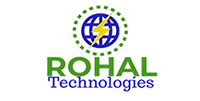


| Download Information Brochure |
POWER SYSTEMS FOR MILITARY APPLICATIONS
Military equipment often requires power systems that can withstand harsh environments and extreme conditions, such as high temperatures, shock and vibration, and electromagnetic interference. Additionally, these power systems must be able to operate in remote locations and be able to function under a wide range of temperatures.
The requirements of military equipment can vary widely depending on the type of equipment. It may be required to operate for extended periods of time without maintenance, which means that the power systems must be highly reliable and have long service lives. They must be lightweight and compact, so as to minimize the overall weight of the equipment.
Military grade power management systems such as battery management systems must be able to monitor and control the power source and provide a reliable power source heat management systems, such as heatsinks, must be able to dissipate heat effectively and prevent damage to the power source.
This event will cover
- Military Power Generators
- Tactical Hybrid Generators
- Advanced energy storage systems
- Smart Power Management Systems
- Intelligent Power Management System
- “Plug-n-play” Energy Hubs
- Portable Power Hubs
- Renewable Energy Sources
- Mil Converters and Filters
- UPS - Military Field-Grade
- Expansion Battery Modules (for UPS)
- Military Power Conditioners (MPC)
- Military Grade Power Supply (MPS)
- Programmable Power Supply (MPPS)
- Military Power Inverters (MINV)
- Military VPX Power Supplies
- Military 3-Phase AC Changer (MAC)
- Military Configurable Power Supplies (MTQ)
- Custom Military Power
- Custom Aerospace Power Supply
- Custom Shipboard Power Supply
- Custom Power for Ground Equipment
- Rugged Power for Comms Equipment
- Energy Control System
- Core Power Batteries
- Battery Only Storage Systems
- Fully-Integrated Systems
- Expeditionary Power
- Emergency Power Kits
- Biofuel, Alternative Fuels
Recent Developments
There have been several recent developments in lightweight, in providing military equipment with a reliable and long-lasting power source that is lightweight and compact, thus increasing the mobility and autonomy of the equipment. Some of the most notable include:
Lithium-ion Batteries: These have a high energy density, which allows for long-lasting power in a lightweight package. They also have a long service life and can be rapidly charged.
Fuel Cells: Highly efficient, lightweight, long-lasting power source, which can operate in remote locations.
Solar Power: Solar panels are a lightweight, long-lasting power source that can be used to generate electricity in remote locations. They can be integrated into military equipment.
Microgrids: Microgrids are small-scale power systems that can be used in remote locations to provide power to a single piece or to a group of equipment.
Hybrid Power Systems: These systems combine multiple power sources, such as batteries, fuel cells, and generators, to provide a reliable and long-lasting power source.
Power Systems for Drones
Small and large drones have different power system requirements, but some general requirements are common to both. Drones have limited space for power systems, so the energy density of the power source must be high to provide a long-lasting power source in a small package. Lithium-ion batteries and fuel cells are commonly used for this reason.
For large drones, the long-lasting power source must be able to provide a high level of power output. Large drones need to be able to fly even if one of the power systems fails, so the power system must have built-in redundancy.
Power Systems for Fighter Aircraft
Fighter aircraft need to power the various systems on the aircraft, other than engines, ie, avionics and weapons systems. Weight is critical, hence, power system must be lightweight as well with high power-to-weight ratio.
For flying for extended periods of time without maintenance, the power system must be highly reliable and safe to use in punishing environments.
Power Systems for Submarines
Submarines have limited space for power systems. They need to be able to operate for extended periods of time without maintenance, in a high-pressure underwater environment, quietly to avoid detection.
Auxiliary power systems for submarines have several special requirements, including Compactness, high reliability, Safety, generate minimal noise and vibration, minimum downtime, and withstand the high pressure and low temperature of the underwater environment.
Power Systems for Soldiers
Soldiers need to carry their own equipment in the field in remote locations and operate in different harsh environment. Power systems for soldiers must be lightweight to minimize the load on the soldier, must have a high energy density to provide long-lasting power source in a small package and be reliable and safe in a variety of environments.
The power source must be durable to withstand rough handling and rugged conditions, and low in maintenance and, at the same time, must be flexible and adaptable to different power needs depending on the mission.
Power Systems for Tanks
Besides the power pack, tanks require auxiliary power to operate the various systems on the tank, such as weapons systems, and communications equipment. They need to be able to operate for extended periods of time without maintenance.
Power Systems for Military Communications
Military communications have several special requirements, primarily EMI/EMC compatibility, portability and ruggedness.
Missiles and Strategic Systems
Missiles and strategic systems need to be able to operate for extended periods of time without maintenance. They are susceptible to EMI and EMC issues, and have limited space for power systems. Redundancy and safety factors are important in the case of missiles.
Alternate Sources of Power
There are increasing calls for military vehicles and equipment to reduce carbon emissions. Alternate sources of power are being explored.
Electric power can be generated from a variety of sources, such as solar, wind, and hydro, which are all renewable and produce no emissions. Electric power can be stored in batteries and used to power military vehicles and equipment.
Hybrid power systems, combining internal combustion engines with electric motors and batteries can improve the fuel efficiency of military vehicles and equipment.
Fuel cells, which convert chemical energy into electricity and can be powered by hydrogen, a clean-burning fuel that produces only water vapor when burned, can be used to power military vehicles and equipment.
Biofuels, such as biodiesel and bioalcohol, are being tried in transport aircraft.
Propane, natural gas, solar energy, are other alternatives to traditional fossil fuels, with lower carbon content, which can be used to power military vehicles and equipment.
Critical Components and Materials
Military grade power sources and power systems require specialized components and materials that can withstand harsh conditions and demanding environments.
Military grade batteries and fuel cells must be able to withstand high temperatures, shock and vibration, and extreme conditions. Lithium-ion batteries and nickel-cadmium batteries are commonly used in military applications due to their high energy density and long service life. Military grade fuel cells typically use platinum and ceramics. Solar panels are typically made with materials such as silicon and glass.
Military grade power electronics, such as inverters and converters, use materials such as silicon and ceramic. Military grade cabling and connectors use materials such as copper and fibre optics.
Common Factors
Military equipment is required to be used for extended periods of time without maintenance, in a variety of environments, rough terrain and harsh conditions, including hot and cold temperatures. They cannot be allowed to fail.
Military systems have limited space for power systems. They are susceptible to EMI and EMC issues.
The power sources need to provide long-lasting power, be portable and utilize minimum fuel and increase the system's endurance. The power source must be compact to fit in the limited space.
The power system must have built-in redundancy, be able to withstand extreme temperatures, humidity, and other environmental factors.
The power system must be highly reliable and safe to use, EMI/EMC compatible, provide for redundancy, climate resistance (extreme temperatures, humidity), and be compact to fit in the limited space.
FRIDAY, 08 DECEMBER 2023
SESSION 1 – INAUGURAL SESSION (0930 – 1045 hrs)
Openning Remarks. Lt Gen Sunil Srivastava, AVSM, VSM**, (Retd) Director, CENJOWS
Inaugural Address. Vice Adm Sandeep Naithani, AVSM, VSM, Chief of Materiel, Naval HQ.
Keynote Address. Lt Gen Sanjay Verma, PVSM, AVSM, VSM**, Retd, Consultant DRDO and Former DG WE.
Industry Perspective Col KV Kuber, Director Defence & Aerospace, Ernst & Young.
Release of Report EY-IMR Knowledge Paper on Military Power Systems.
1045 – 1115 hrs Refreshment break and exhibition.
SESSION 2 – POWER PACKS AND STORAGE SYSTEMS FOR LAND SYSTEMS & COMMS (1115 – 1300)
Chairperson: Brig PS Sidhu, Brig Tac C, Signals Directorate, Army HQ.
1115 – 1130 hrs Introduction of speakers and Opening Remarks by the Chairman.
1130 – 1145 hrs Challenges in meeting power requirements for land forces. Brig JS Sidhu, Brig (T & WS), Army Design Bureau.
1145 – 1155 hrs Alternative technologies for energy storage in high altitudes & low temperatures areas. Devakanta Pahad Singh, Scientist 'G’, Defence Institute of Bio-Energy Research, DRDO.
1155 – 1205 hrs Meeting Power requirements in the field. Col Praveen Nair, CWE Utilities, MES.
1205 – 1215 hrs Power Requirements for Communications Systems in Diverse Terrain and Conditions. Col Anshul Verma, Col Induction & Operations, Signals Directorate, Army HQ.
1215 – 1230 hrs Industry presentation. Col Umesh Varma (Retd), Head Business Development Multisphere Power Solutions.
1230 – 1245 hrs Advanced Li-ion batteries applicable in military applications. Dr. Mandira Majumder, Scientist, Electrolyte & Head of IP Portfolio, Godi India.
1245 – 1300 hrs Panel discussion.
1300 – 1400 hrs Lunch and exhibition.
SESSION 3 – POWER SUPPLY FOR AERIAL AND MARITIME SYSTEMS (1400 – 1610 hrs)
Chairperson: Air Vice Marshal PS Gangopadhyay, VSM, ACAS Engineering B, Air HQ.
1400 – 1415 hrs Introduction of speakers and Opening Remarks by the Chairman.
1415 – 1425 hrs Special power requirements of the surface and underwater combatants. Cdr Saurabh S Sharma, Cdr (Submarine Design Group), Naval HQ.
1425 – 1435 hrs Fuel Cell technology for underwater applications. Dr Suman Roy Choudhury , Scientist H, Naval Materials Research Laboratory (NMRL), DRDO.
1435 – 1445 hrs Peculiarities and challenges in Power Systems in IAF and way forward for next decade. Air Cmde SK Satpathy, VSM, Air Cmde Ground Elec & Engg Sp, Air HQ
1445 – 1500 hrs Powering of Unmanned Aerial Systems. Sh KS Azhil Thirumaran, Sc F, ADE, DRDO.
1500 – 1515 hrs Lithium-Ion, Li-Sulfur, Li-Ag2O, Mg-Ion Batteries and applications. Sh Logananthan S, Research Centre Imarat, Hyderabad, DRDO.
1515 – 1530 hrs Vertiv PFM Solutions for Containerized Edge & Modular Data Center. Jaideep Roy, Director Business Development, Vertiv Energy.
1530 – 1545 hrs Panel discussion
SESSION 4 – FUTURE PROSPECTS (1545 – 1715 hrs)
Chairperson: Maj Gen AK Channan, AVSM, VSM, Retd, Former Head Army Design Bureau.
1545 – 1600 hrs Introduction of speakers and Opening Remarks by Chairman
1600 – 1615 hrs Future Fuels for Automotive Applications. Dr Ajay K. Arora, GM (Fuels), IndianOil (R&D Centre)
1615 – 1630 hrs Small Module Nuclear Reactors. Ms Rishika Singh, Visiting Associate Fellow, CAPS
1630 – 1645 hrs Long Range Power Systems for Hypersonic Vehicles. Sh Maneesh Dewangan, Scientist F, Defence Research and Development Laboratory, DRDO.
1645 – 1700 hrs Panel discussion
Closing Remarks. Lt Gen Sunil Srivastava, AVSM, VSM**, (Retd) Director, Centre for Joint Warfare Studies
Vote of Thanks. Maj Gen Ravi Arora, (Retd), Chief Editor, Indian Military Review.
1715 onwards Refreshments and dispersal.

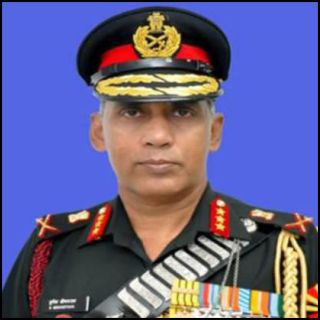





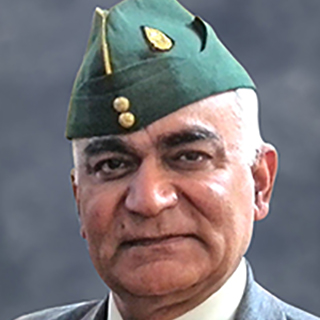


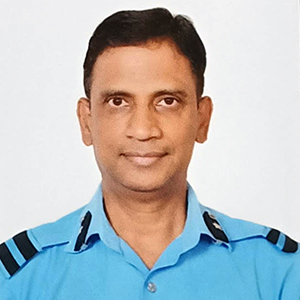
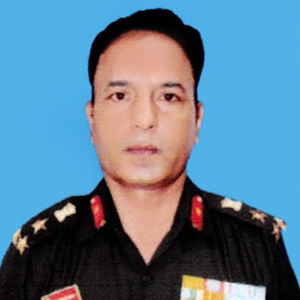


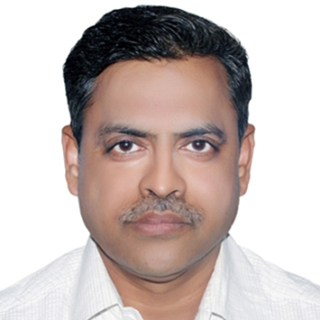






For Registered Users and Valid Pass Holders
Log-in with username "guest@mail.com" and password "guest"
If not already registered, buy a pass now from the options below.
